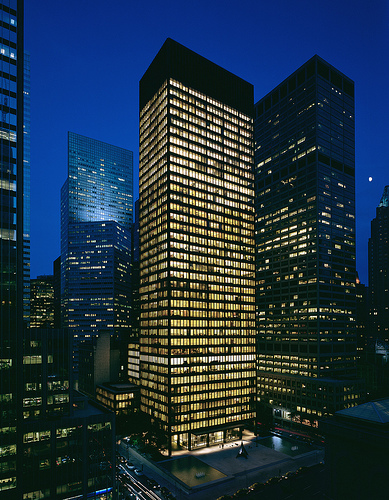William Morris, an English textile designer, and member of the English Arts and Crafts movement was a proponent for funtionalism in art. Western art being tradtionally exspensive and something that was and in some instances still is unattianable by the general public unless it is viewed in a musuem. Morris wanted a movement away from this thinking. Morris and his contemporaries knew that there was a need for a new school of thought in western art. Morris wanted art to enrich the life of the common man and wanted the artist to create things of beauty that could enjoyed by the general public. Morris was a socialist which was part of the reason why he never came to true fame but his idea was the spark that would lead western art in the direction of the Bauhaus school.
The Bauhaus school was created in 1919 in Germany. The school cirriculum incorporated the principles of an art academy with workshop skills. Bauhaus was the perfect combination of fine arts and applied arts. The emphasis of the Bauhaus school was mass production as opposed to hand crafting.The goal of the school was to produce designs that could be replicated in factories. Bauhaus was closed in the 1930's due to Nazi harassment.


The founding father of Bauhaus was, Walter Gropius and because Gropius and the influence of Bauhaus International Style became prevalent in the United States, especially New York. "International Style is an architectural style that emerged in several European countries between 1919 and 1920. Related to purism and De Stijl in painting, it joined structure and exterior design into a neoeclectic form based on rectangular geometry and growing out of basic fuction and structure of the building"(Frank and Preble 484).Hince the New York skyscraper and Carnegie steel as we discussed in class. Ludwig Mies van der Rohe,was an architect and designer, that was associated with Bauhaus you see this in his Manhattan building along with Philip Johnson(Seagram Building 1956-1958).

In the late 20th and now in the 21st
century we look at Bauhaus every day without even realizing it. Walk into any
office building/skyscraper and you area surrounded. Not only is the building
influenced by Bauhaus but the office furniture as well. In the 80’s Bauhaus reemerged
especially in Manhattan, Chicago and the West Coast. Like Le Corbusier in the
early 20th century with the creation of Villa Savoye (1928-1930), the inside and
outside of architecture has geometric form and is beautiful yet functional. Now
maybe we will think of Bauhaus the nest time we sit in an ergonomic chair.

References
http://char.txa.cornell.edu/art/decart/artcraft/artcraft.htm
Frank, Patrick, and Duane Preble. Prebles' Artforms: An Introduction to the Visual Arts. Upper Saddle River, NJ: Pearson Prentice Hall, 2006. Print.
Images
http://www.flickr.com/photos/ad_symphoniam/4030762763/sizes/m/in/photostream/
http://www.ruksliving.com/bauhaus.aspx
http://www.archdaily.com/59412/seagram-building-mies-van-der-rohe/
http://www.bc.edu/bc_org/avp/cas/fnart/Corbu.html
Link
Villa Savoye
No comments:
Post a Comment